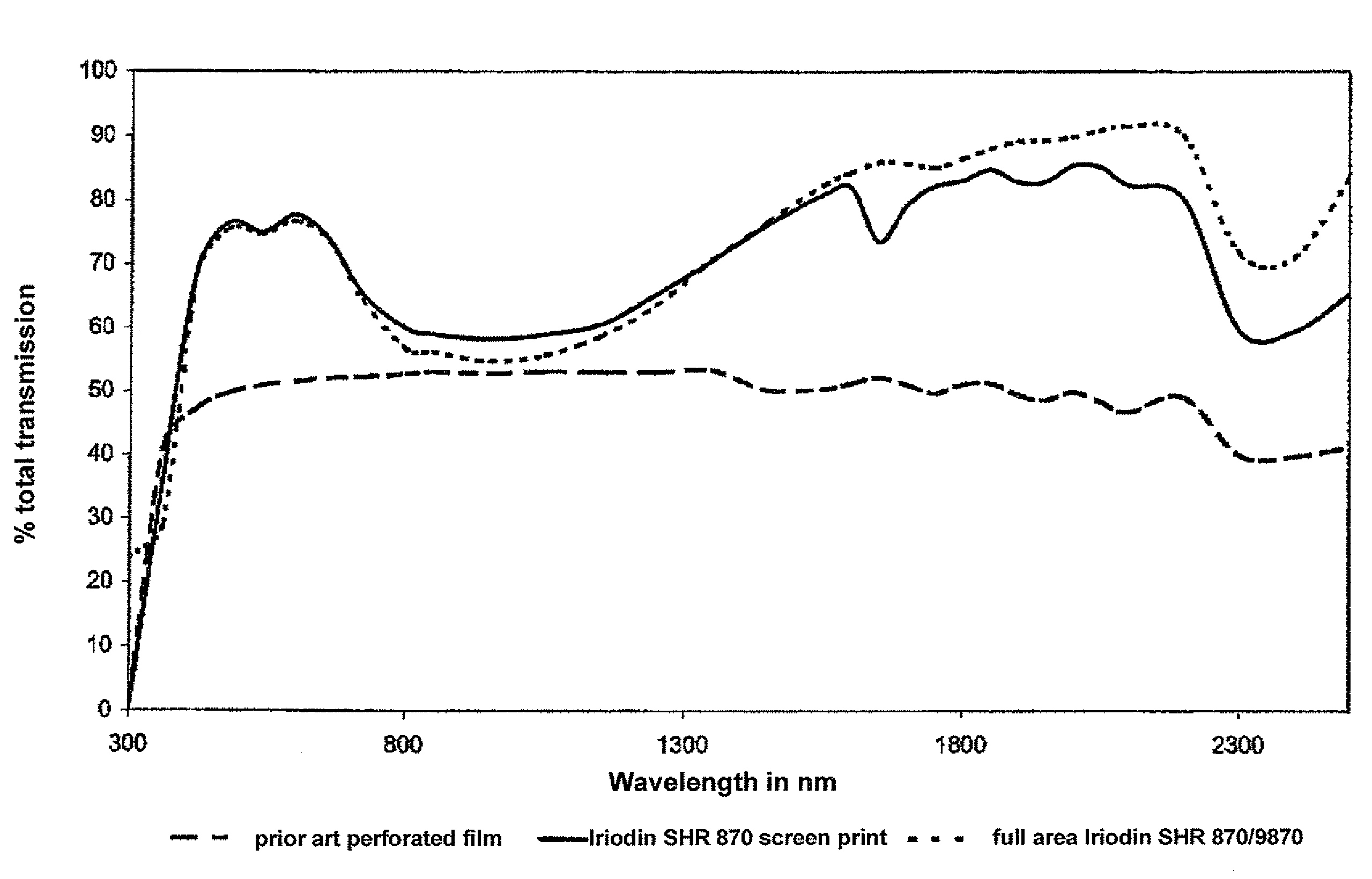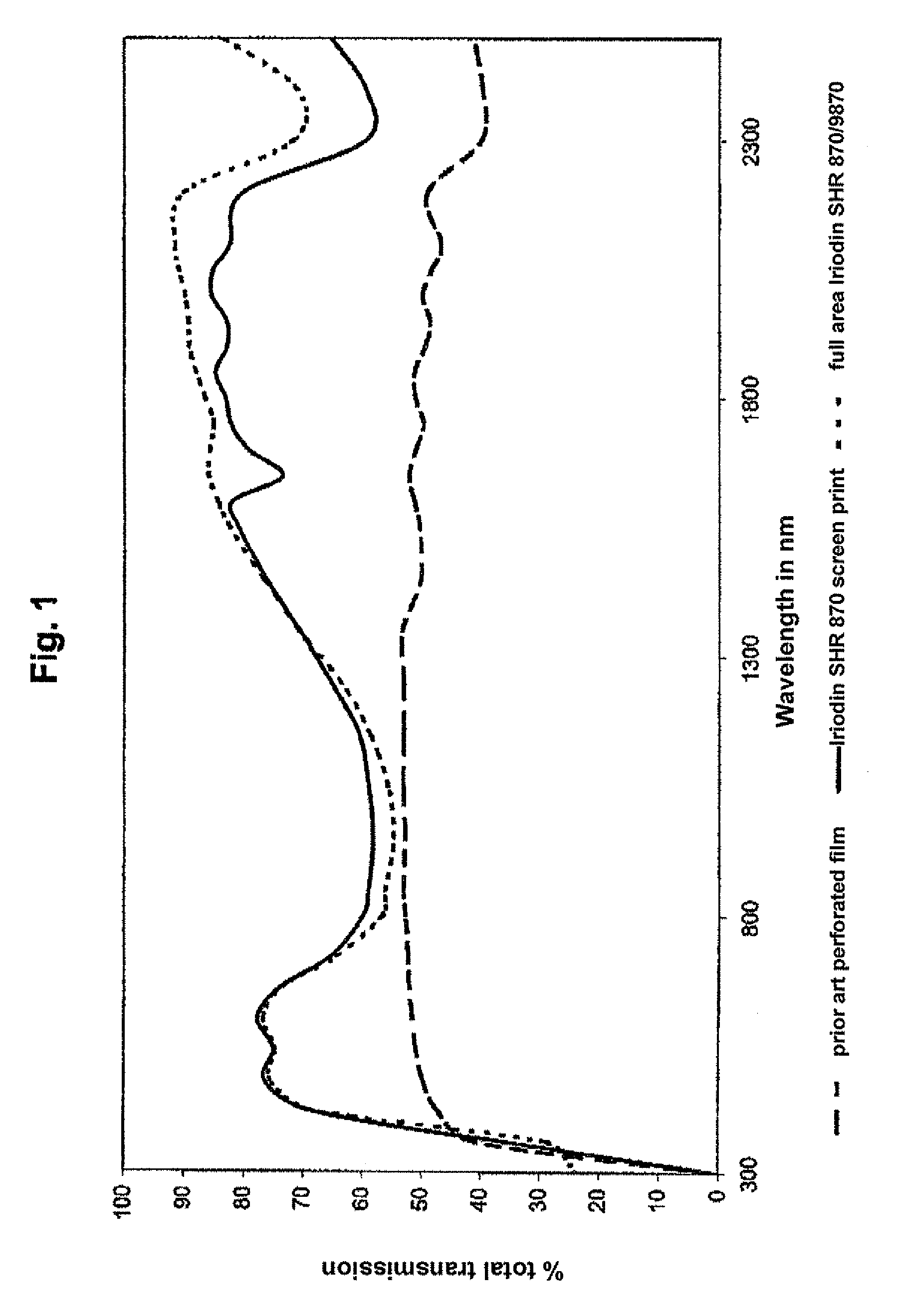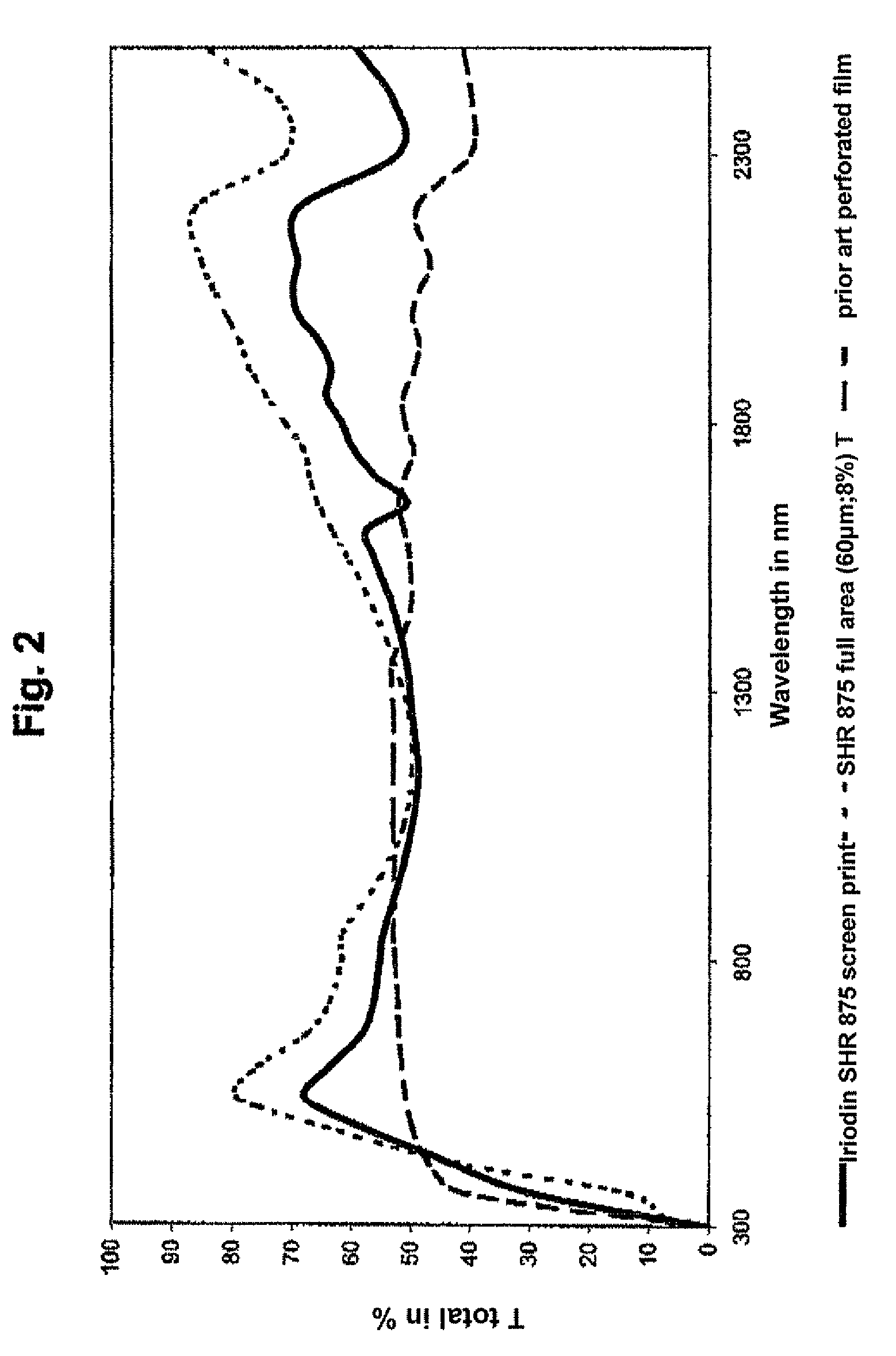Infrared-reflective material comprising interference pigments having higher transmission in the visible region than in the NIR region
a technology of interference pigments and infrared radiation, which is applied in the field of lighttransparent, irreflective bodies, can solve the problems of loss of transparency of base materials, visible light is also reflected, darkening interior rooms, etc., and achieves high pigment concentration, high reflection, and high reflection of nir radiation.
- Summary
- Abstract
- Description
- Claims
- Application Information
AI Technical Summary
Benefits of technology
Problems solved by technology
Method used
Image
Examples
example 1
[0063]A screen-printable coating is prepared from a mixture of 85% by weight of a solvent-containing binder which is suitable for screen printing (PLN / 093 from Pröll, Weissenburg) and 15% by weight of Iriodin® SHR 870 / 9870 (commercial product from Merck KGaA, Darmstadt) and printed onto a PET film using an Atma flat-bed screen-printing machine via a 52T flat-bed screen. A degree of coverage of the surface of 50% is set via a dot grid.
[0064]A sample piece of the printed film having a size of 5×5 cm is subsequently measured spectrally using a Perkin-Elmer Lambda 900 spectrophotometer with integration sphere (150 mm) in the transmission position. The transmission is analyzed in the range from about 300 to about 2500 nm of the solar spectrum. The result is shown in FIG. 1.
example 2
[0072]A screen-printable coating is prepared from a mixture of 85% by weight of a solvent-containing binder which is suitable for screen printing (PLN / 093 from Pröll, Weissenburg) and 15% by weight of Iriodin® SHR 875 / 9875 (commercial product from Merck KGaA, Darmstadt) and printed onto a PET film using an Atma flat-bed screen-printing machine via a 52T flat-bed screen. A degree of coverage of the surface of 50% is set via a dot grid.
[0073]A sample piece of the printed film having a size of 5×5 cm is subsequently measured spectrally using a Perkin-Elmer Lambda 900 spectrophotometer with integration sphere (150 mm) in the transmission position. The transmission here is analyzed in the range from about 300 to about 2500 nm of the solar spectrum. The result is shown in FIG. 2.
PUM
| Property | Measurement | Unit |
|---|---|---|
| Percent by mass | aaaaa | aaaaa |
| Percent by mass | aaaaa | aaaaa |
| Transparency | aaaaa | aaaaa |
Abstract
Description
Claims
Application Information
 Login to View More
Login to View More - R&D
- Intellectual Property
- Life Sciences
- Materials
- Tech Scout
- Unparalleled Data Quality
- Higher Quality Content
- 60% Fewer Hallucinations
Browse by: Latest US Patents, China's latest patents, Technical Efficacy Thesaurus, Application Domain, Technology Topic, Popular Technical Reports.
© 2025 PatSnap. All rights reserved.Legal|Privacy policy|Modern Slavery Act Transparency Statement|Sitemap|About US| Contact US: help@patsnap.com



